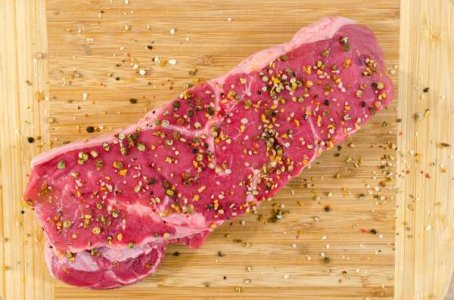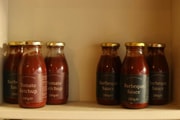Are you iron-deficient? Discover 7 simple diet changes to boost your iron levels instantly!
By
Aubrey Razon
- Replies 0
Disclaimer: The information provided in this article is for educational purposes only and is not intended as a substitute for professional medical advice, diagnosis, or treatment. Always consult your physician or other qualified healthcare providers with any questions you may have regarding a medical condition or before making any changes to your health regimen.
As we age, our bodies undergo numerous changes, and maintaining proper nutrition becomes increasingly important. Iron is one of those essential nutrients that often gets overlooked, yet it plays a vital role in keeping us healthy and energetic.
For our GrayVine community, understanding the importance of iron and how to ensure adequate intake is crucial—especially since nearly one-third of American adults may be skimping on this critical mineral.
Iron is the backbone of hemoglobin, the protein in red blood cells that shuttles oxygen throughout the body. It's also a component of myoglobin, which supplies oxygen to muscles, and it supports brain development, cellular function, and hormone production.
Without enough iron, you might experience symptoms like fatigue, weakness, stomach issues, and even hair loss. These are signs of iron deficiency anemia, where your body can't produce enough red blood cells to transport oxygen efficiently.
Women, particularly those of childbearing age, need more iron due to menstruation. Menopause brings its own set of challenges, as the body's ability to absorb iron can decrease with age.
Other groups at risk include infants, children, and those with certain health conditions or dietary restrictions.
While iron supplements can help those with significant deficiencies, they should only be taken under medical supervision. Excess iron can cause unpleasant side effects and even be harmful, so it's best to get your iron from food sources whenever possible.

Are you concerned about your iron levels? Have you found creative ways to incorporate iron-rich foods into your diet? Share your tips and experiences in the comments below. Let's help each other stay informed and healthy!
As we age, our bodies undergo numerous changes, and maintaining proper nutrition becomes increasingly important. Iron is one of those essential nutrients that often gets overlooked, yet it plays a vital role in keeping us healthy and energetic.
For our GrayVine community, understanding the importance of iron and how to ensure adequate intake is crucial—especially since nearly one-third of American adults may be skimping on this critical mineral.
Iron is the backbone of hemoglobin, the protein in red blood cells that shuttles oxygen throughout the body. It's also a component of myoglobin, which supplies oxygen to muscles, and it supports brain development, cellular function, and hormone production.
Without enough iron, you might experience symptoms like fatigue, weakness, stomach issues, and even hair loss. These are signs of iron deficiency anemia, where your body can't produce enough red blood cells to transport oxygen efficiently.
Women, particularly those of childbearing age, need more iron due to menstruation. Menopause brings its own set of challenges, as the body's ability to absorb iron can decrease with age.
Other groups at risk include infants, children, and those with certain health conditions or dietary restrictions.
The Iron Diet: 7 Easy Ways to Pump Up Your Intake
1. Red Meat: A Reliable Source
Lean red meat is a powerhouse of heme iron, the type that's most easily absorbed by the body. A small serving of ground beef or a slice of roast lamb can significantly contribute to your daily iron needs. Remember to choose lean cuts to keep saturated fat in check.2. Plant Power: Spinach and Beans
For a plant-based iron boost, turn to spinach and white beans. Spinach is not only rich in iron but also in vitamin C, which enhances iron absorption. White beans are another excellent source, and they're incredibly versatile—perfect for soups, salads, and even as a meat substitute in many recipes.3. Seafood: Oysters and Beyond
Seafood lovers rejoice! Oysters, clams, and mussels are not only delicious but also brimming with iron. If raw oysters aren't your thing, try them grilled or in a hearty stew.
4. Seeds and Nuts: Snack on Pumpkin Seeds
Pumpkin seeds are a tasty snack that packs an iron punch. They're also rich in other minerals and can be easily added to your diet—sprinkle them on salads, blend them into smoothies, or mix them into your homemade trail mix.5. Dried Fruit: Apricots for Sweetness and Iron
Dried apricots offer a sweet way to sneak more iron into your diet. They're perfect as a chewy snack or as a natural sweetener in baked goods, and they come with the added benefit of fiber and other essential nutrients.6. Fortified Foods: Cereal Can Be a Game-Changer
Fortified cereals are a convenient source of iron, especially for those mornings when you need a quick breakfast. Pair them with vitamin C-rich fruits like strawberries or oranges to maximize iron absorption.7. The Vitamin C Connection
To ensure you're getting the most out of your iron intake, pair iron-rich foods with those high in vitamin C. This could mean adding bell peppers to your beef stir-fry or squeezing a lemon over your spinach salad.While iron supplements can help those with significant deficiencies, they should only be taken under medical supervision. Excess iron can cause unpleasant side effects and even be harmful, so it's best to get your iron from food sources whenever possible.
Key Takeaways
- Nearly one in three American adults may suffer from iron deficiency, which presents a significant public health concern.
- Iron is essential for producing hemoglobin, supporting brain development, growth, cellular function, and hormone production; deficiency can cause a range of symptoms including fatigue and weakness.
- Women, infants, children, older adults, and vegetarians or vegans are at higher risk of iron deficiency and have different dietary iron needs.
- To increase iron intake, include iron-rich foods like red meat, pumpkin seeds, oysters, white beans, dried apricots, spinach, and fortified cereals, and combine with vitamin C to improve absorption. Iron supplements should only be taken under medical supervision.







